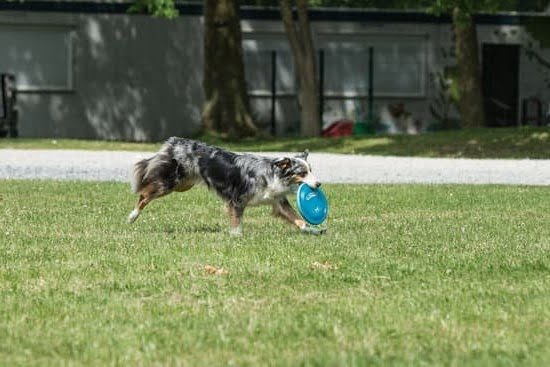Have you ever wondered how to train a dog to attack and release? Whether for protection, security work, or sport, training a dog to perform these commands requires careful consideration, dedication, and proper technique. Understanding the purpose behind this type of training is crucial in ensuring the safety and effectiveness of your dog’s performance.
Training a dog to attack and release is not just about teaching aggressive behaviors. It involves developing a strong bond of trust and communication between you and your pet. This bond is essential for creating a harmonious relationship based on mutual respect and understanding. By choosing the right breed for attack training and building a solid foundation of obedience skills, you can set the stage for successful training sessions.
In this article, we will explore the key aspects of training a dog to attack and release, from selecting the appropriate breed to mastering the commands effectively. By following proven techniques and tips for safe training practices, you can ensure that your dog responds reliably in high-stress situations while maintaining control and safety. Let’s delve into the world of attack training with our canine companions.
Choosing the Right Breed for Attack Training
When it comes to training a dog to attack and release, selecting the right breed is crucial. Not all breeds are suitable for this type of training, as some may not have the natural instincts or temperament required. Working breeds such as German Shepherds, Belgian Malinois, and Rottweilers are often preferred for attack training due to their intelligence, agility, and protective nature.
Understanding Breed Characteristics
Before choosing a specific breed for attack training, it is essential to understand their characteristics and instincts. German Shepherds, for example, are known for their loyalty and work ethic, making them ideal candidates for protection work. Belgian Malinois are highly energetic and driven, making them well-suited for tasks that require focus and determination. Rottweilers are strong and confident dogs with a natural instinct to protect their families.
Evaluating Individual Temperament
While breed characteristics can provide general guidelines for choosing a suitable candidate for attack training, it is also important to evaluate each dog’s individual temperament. Factors such as socialization history, previous training experiences, and response to stressful situations can all impact a dog’s ability to excel in attack training. Conducting temperament tests or consulting with professional trainers can help determine if a specific dog is appropriate for this type of training.
Ultimately, selecting the right breed for attack training involves careful consideration of both breed characteristics and individual temperament. By choosing a breed with the right instincts and temperament, owners can set their dogs up for success in learning how to train a dog to attack and release effectively. Additionally, proper socialization, obedience training, and ongoing support will be crucial in developing a well-rounded protection dog that can safely navigate high-stress situations.
Building Trust and Bond With Your Dog Before Starting Training
Before delving into the training process for a dog to attack and release, it is crucial to establish a strong foundation of trust and bond with your canine companion. Building a positive relationship with your dog is essential for successful training outcomes. Here are some key steps to consider in fostering a strong connection with your dog before starting attack and release training:
- Spending quality time together: Engage in activities that your dog enjoys, such as playtime, walks, or cuddling. This will help strengthen the bond between you and your pet.
- Basic obedience training: Prioritize basic obedience training exercises like sit, stay, and come commands to establish communication and respect between you and your dog.
- Reward-based training: Use positive reinforcement techniques, such as treats, praise, and toys, to motivate your dog and create a positive association with training sessions.
Moreover, understanding your dog’s personality, preferences, and body language can also aid in building trust. Pay attention to their cues and responses to different situations to better comprehend their needs and feelings. By investing time in nurturing a solid bond with your dog before initiating attack training, you lay the groundwork for a successful and harmonious training experience.
- Consistency in routines: Establish consistent feeding schedules, exercise routines, and downtime activities to create predictability for your dog.
- Physical touch: Petting, grooming, and gentle physical interactions can help strengthen the bond between you and your furry companion.
- Provide a safe environment: Ensure that your home environment is secure, comfortable, and free of potential hazards that may cause stress or anxiety for your dog.
By prioritizing trust-building exercises and activities with your dog before embarking on attack and release training, you set the stage for a positive learning experience based on mutual respect, communication, and understanding. Remember that patience, consistency,and empathy are key components in establishing a strong bond with your canine partner on this journey towards effective attack training protocols.
Basic Obedience Training
To begin with, here are some basic obedience commands that every dog should learn before moving on to attack and release training:
- Sit: Teach your dog to sit on command, which helps in controlling their behavior.
- Stay: Training your dog to stay in one place until given permission is vital for managing situations.
- Come: The recall command is essential for calling your dog back to you effectively.
- Heel: Teaching your dog to walk beside you in a calm manner ensures better control in various situations.
Once your dog has mastered these basic commands, you can then proceed to more advanced training methods for attack and release. Remember, building a strong foundation through basic obedience training is key to success in teaching more complex skills related to protection work.
In addition to obedience training, it’s important to focus on socialization and desensitization exercises. Exposing your dog to different environments, people, and animals will help them become more confident and well-rounded.
This process will also aid in reducing any fear or anxiety-related behaviors that may affect their ability to respond appropriately during attack and release training sessions. Overall, patience, consistency, and positive reinforcement are key elements in preparing your dog for protection work while maintaining a strong bond with them.
Teaching Attack Command
Understanding the Importance of Attack Training
Training a dog to attack on command can be a valuable skill in certain situations such as personal protection or security purposes. However, it is crucial to understand that attack training should only be done by experienced handlers and in specific controlled environments. The goal of attack training is not to create an aggressive or dangerous animal, but rather to teach the dog how to respond appropriately to a threat when given the command.
Establishing Clear Communication
Before starting the attack training, it is essential to establish clear communication with your dog. Dogs are incredibly intuitive animals and can pick up on subtle cues from their handlers. Use consistent verbal commands, hand signals, and body language to ensure your dog understands what is expected of them during training sessions. Positive reinforcement techniques such as treats and praise can help reinforce good behavior during training.
Gradual Progression and Safety Measures
When teaching the attack command, it is crucial to start slowly and gradually build up the intensity of the training. Begin by practicing basic obedience commands in a distraction-free environment before introducing the attack command. It is vital to prioritize safety throughout the training process by using proper equipment such as a sturdy leash and muzzle when necessary. Always supervise training sessions closely and be prepared to intervene if needed to prevent any accidents or injuries.
By following these techniques and tips for safe and effective attack training, you can help your dog develop the skills needed to respond appropriately in high-stress situations while maintaining control and ensuring safety for all parties involved. Remember that attack training should always be done responsibly with proper guidance from experienced trainers or professionals in the field.
Teaching Release Command
When training a dog to attack, it is equally important to focus on teaching the release command to ensure control and safety in high-stress situations. The release command is crucial as it allows the handler to regain control over the dog and prevent any unwanted or prolonged aggression. This command teaches the dog when to stop the attack and back off, making it a vital part of the training process.
One effective way to teach the release command is by using positive reinforcement techniques. Start by establishing a strong foundation with basic obedience training and build a bond of trust with your dog. Use treats, toys, or verbal praise as rewards for obeying the release command. Consistency is key – make sure to use the same cue every time and reward your dog immediately upon compliance.
It is essential to practice the release command in various scenarios and environments to ensure reliability in real-life situations. Start with controlled drills where you simulate an attack scenario and then give the release command. Gradually increase distractions and difficulty levels to test your dog’s response.
Regular practice will help reinforce the behavior and strengthen your bond with your dog. Remember, patience, consistency, and positive reinforcement are key elements in successfully teaching your dog how to attack and release.
Practice Makes Perfect
Training a dog to attack and release is a serious responsibility that requires careful planning and execution. Once your dog has mastered the basics of obedience training and has learned the attack and release commands, it is crucial to practice these skills in various real-life scenarios to ensure they can perform reliably when needed.
Training drills and scenarios play a key role in helping your dog understand when to attack, how to release on command, and how to assess different situations for safety.
One effective training drill for teaching your dog when to attack is setting up scenarios where a “threat” approaches you or your property. Start by commanding your dog to stay alert, then give the attack command when the threat gets closer.
It is essential to provide positive reinforcement when your dog follows through with the command and maintains control during the scenario. Additionally, incorporating distractions during these drills can help your dog focus on their task even in high-stress situations.
Another crucial aspect of training drills for attack and release commands is practicing the release command in different environments. This helps reinforce your control over your dog even when adrenaline is high or if unexpected variables arise.
Use varying levels of difficulty in scenarios, such as introducing new people or objects, to keep your dog’s training sharp. Consistent repetition of these drills will instill muscle memory in your dog, making their response automatic and reliable when faced with a real-life situation.
| Key Points | Details |
|---|---|
| Training Drill Importance | Helps dogs understand when to attack and how to release on command. |
| Attack Scenarios | Create scenarios where threats approach for effective training. |
| Release Command Practice | Reinforce control over the dog in various environments. |
Maintaining the Training
Consistency, patience, and continued reinforcement are key components in maintaining the training of a dog to attack and release. Once you have successfully taught your dog the attack and release commands, it is crucial to remain consistent in practicing these commands regularly. Repetition is essential for reinforcing the behavior and ensuring that your dog remains responsive to your commands.
Patience is another important factor when it comes to maintaining training for attacking and releasing. Dogs, like humans, may have off days where they do not perform as expected or seem distracted. It is important not to get frustrated and instead remain calm and patient with your furry companion. By staying patient and positive during training sessions, you can help your dog stay focused and engaged.
Continued reinforcement is also vital in keeping up with your dog’s training for attack and release commands. Even after your dog has mastered these commands, it is important to continue practicing them regularly to ensure that they do not forget or become less responsive over time.
Incorporating these commands into daily routines or engaging in regular training sessions will help reinforce the behavior and solidify your dog’s understanding of when to attack and release on command. Remember, consistency, patience, and continued reinforcement are key to maintaining a well-trained attack and release dog.
When to Seek Professional Help
Training a dog to attack and release is a serious responsibility that requires careful consideration and commitment. While it can be rewarding to have a well-trained protection dog, it is crucial to recognize when professional help may be necessary. Professional trainers have the expertise and experience to handle complex training situations, ensuring the safety of both the dog and its owner.
One of the key signs that it may be time to seek professional help is if you are facing challenges or limitations in training your dog on your own. Professional trainers have specialized knowledge in behavior modification and can provide guidance on addressing any issues that may arise during attack and release training. Additionally, seeking professional help demonstrates responsible dog ownership by prioritizing the safety and well-being of both the dog and those around them.
In conclusion, while training a dog to attack and release can be a valuable skill for protection purposes, knowing when to seek professional help is essential for successful training outcomes. By recognizing your limitations and understanding the importance of responsible dog ownership, you can ensure safe and effective training for your canine companion. Remember, it’s always better to seek assistance from qualified professionals to prioritize the safety and well-being of everyone involved in the training process.
Frequently Asked Questions
What Are the Dog Commands for Release?
The common dog commands for release include “drop it” or “leave it.” Consistent training and positive reinforcement are key to teaching a dog to obey these commands reliably.
What to Do if a Dog Attacks Your Dog and Won’t Let Go?
If a dog attacks your dog and won’t let go, it’s important to stay calm and not panic. Attempting to separate the dogs physically can be dangerous, so using loud noises or distractions like water may help break up the fight.
How Do I Get My Dog to Release?
Getting your dog to release something can be done through training and practice. Using positive reinforcement such as treats or toys can help encourage your dog to let go of an object on command. Consistency is key in reinforcing this behavior.

Welcome to the blog! I am a professional dog trainer and have been working with dogs for many years. In this blog, I will be discussing various topics related to dog training, including tips, tricks, and advice. I hope you find this information helpful and informative. Thanks for reading!





